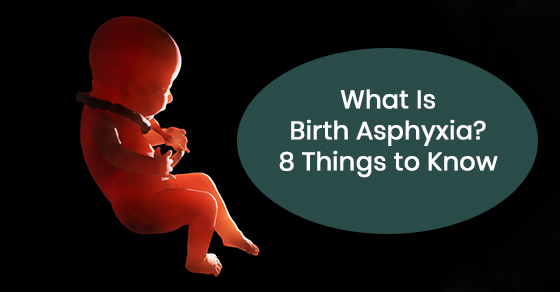Childhood illness and injury are devastating to those impacted by them. As a leading malpractice law firm here in Ontario, Canada, Sommers, Roth & Elmaleh strive to ensure our clients have all the support needed to give these children the best chance at a happy life.
One of the most common birth disorders affecting children in Canada is birth asphyxia. As the name suggests, this occurs when a baby’s brain is deprived of oxygen during the birthing process. Oxygen deprivation causes long term congenital disabilities, particularly those related to development and cognition.
To help our clients better understand birth asphyxia and what it might mean for your child, we have designed this guide. Here are eight things you should know about this condition and how to find recompense for your family.
1. Perinatal asphyxia is more common than you think
We know that approximately 1 in every 1000 babies will experience significant oxygen deprivation in the womb or during birth. Of these children, close to 1 out of 4 will be left with lasting congenital disabilities, including neurological delays.
It is important to note that while some perinatal asphyxia cases are unpreventable, there are some cases caused by negligent medical attention.
2. The causes of birth asphyxia vary
As a parent, you need to know that there is no one cause or cure. Oxygen deprivation during birth can be caused for a variety of reasons, including:
- Low maternal blood pressure
- Placental separation
- Heart problems
- Anemia
- Heart disease
- Umbilical cord compression
- Ongoing uterine contractions which prevent appropriate circulation
For women experiencing high-risk pregnancies or premature births, it’s essential that your doctor monitor progress regularly. When high-risk pregnancies are neglected, there can be severe and lasting impacts, like birth asphyxia.
3. Knowing the symptoms of perinatal asphyxia can help
For many families, a lack of information on birth asphyxia makes it difficult to pinpoint this problem as it occurs. By knowing common symptoms and monitoring your pregnancy for these symptoms, you may be able to avoid perinatal asphyxia. Common symptoms of birth asphyxia include:
- Acidic blood levels
- Poor muscle definition
- Inability to cry
- Muscle weakness
- Blue tinge to skin and lips
- Heart murmur
- Low blood pressure
- Meconium in the amniotic fluid
- Struggling to breathe
- Weak muscle tone and reflexes
If you notice any of these symptoms, reporting them to your doctor as quickly as possible can reduce long-term problems caused by perinatal asphyxia.
4. Request a test for birth asphyxia
If you are concerned that your child has suffered from perinatal asphyxia, you can request your doctor test for it. This is done through various modern scans such as a radiograph and rating systems like the APGAR score, which tests newborns on everything from breathing and skin colour to muscular formation and heart rate.
It is crucial to know your rights as a new parent, especially in situations where your child’s life is at risk. Testing for symptoms you notice not only helps your child receive the treatment he or she needs, but it works for you if you should take legal action due to medical negligence.
5. There are treatments for birth asphyxia
Though not every child who suffers perinatal asphyxia will react to treatment, treatments are available to reduce side effects and encourage oxygenation. One of the treatments that offer a significant response in babies is therapeutic hypothermia.
Therapeutic hypothermia is used following the first signs of neonatal hypoxic-ischemic encephalopathy. This helps restore glucose and oxygen levels in the blood and the brain. It works best when administered within 6-hours of oxygen deprivation. If the treatment works, it reduces the risk of death and disability by a significant percent.
Cooling the body is especially helpful in severe cases of birth asphyxia. There are also physical therapies to support infants with respiration, such as intubation, nitric oxide inhalation, and surfactant. If seizures and other subsequent symptoms appear, they will be treated with various methods and medication as needed.
The Repercussions of Perinatal Asphyxia Are Serious
Children who suffer from perinatal asphyxia often develop long-term conditions. Many will be unable to meet the same milestones as their peers as they grow. This includes physical and mental milestones, such as walking, eating independently, and even speaking.
Some of the most common long-term effects of perinatal asphyxia include:
- Epilepsy and ongoing seizures
- Speech delays, or inabilities to speak at all
- Mental health conditions
- Muscle stiffness and twitching
- Cognitive delays
- Feeding and digestion issues
- Emotional disabilities
- Muscle weakness on one or both sides of the body
- Vision and hearing loss
- Behavioural disorders
- Difficulty providing self-care, even as an adult
Due to the many long-term side effects of this condition, children and their families will deal with the consequences of perinatal Asphyxia for the rest of their lives. While in most cases, the symptoms do not worsen over time, some children develop new symptoms as they get older.
It is this ongoing need for care that makes malpractice cases for perinatal asphyxia important. The time, money, and emotion required to care for a child suffering the consequences of this condition are immense.
7. You are not alone
Perhaps the most important thing to know about perinatal asphyxia is that you are not alone. There are many online and in-person help groups for both parents and children affected by birth asphyxia. There is also legal help.
Learning your child has an ongoing condition due to a medical professional’s potential negligence is devastating. Working with a lawyer to understand your rights and receive the appropriate compensation to support your child throughout their life helps ensure you are not left to bear the burden of medical costs alone.
For more information on perinatal asphyxia and the legal support you are entitled to, call Sommers, Roth & Elmaleh at 1-844-777-7372 or contact us here.

